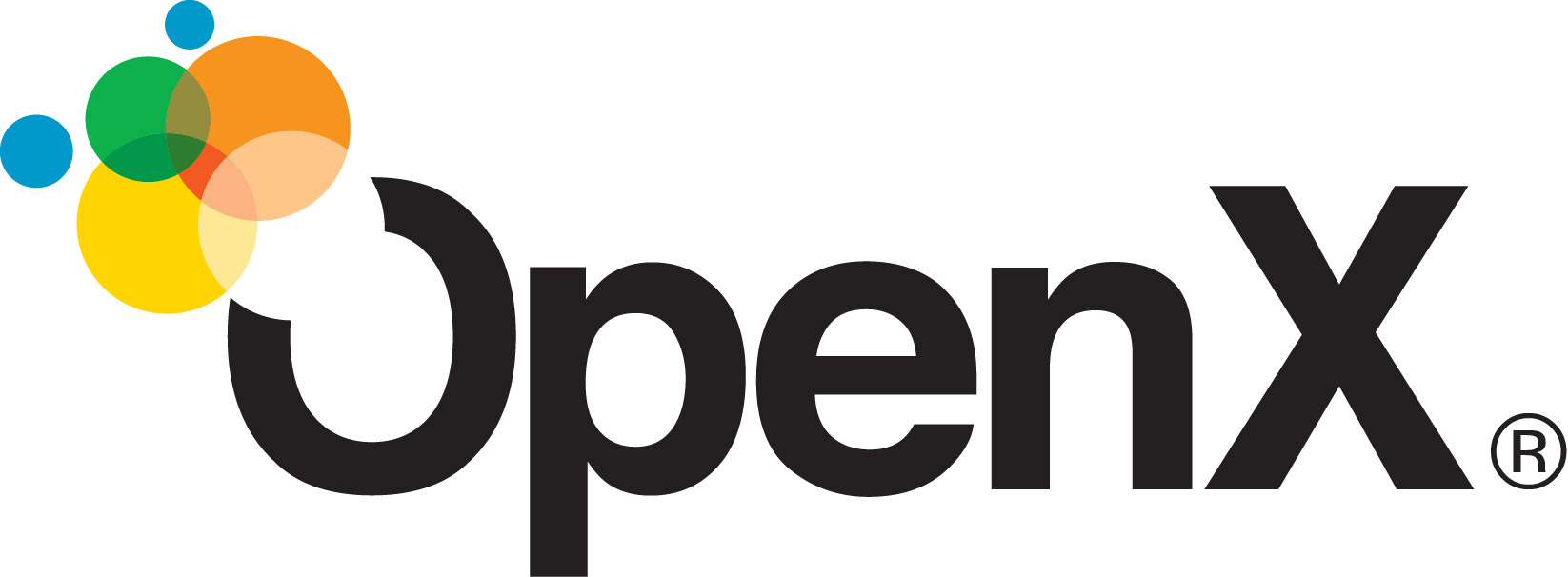In this post, we discuss solving numerical optimization problems using the very flexible Amazon SageMaker Processing API. Optimization is the process of finding the minimum (or maximum) of a function that depends on some inputs, called design variables. This pattern is relevant to solving business-critical problems such as scheduling, routing, allocation, shape optimization, trajectory optimization, and others. Several commercial and open-source solvers are available for solving such problems. We demonstrate this solution with three popular Python libraries and solvers that are free to use, and provide a sample notebook that shows how to solve these optimization problems using SageMaker Processing.
Solution overview
SageMaker Processing lets data scientists and ML engineers easily run preprocessing, postprocessing, and model evaluation workloads on SageMaker. This SDK uses the built-in container for scikit-learn and Spark. You can also use your own Docker images without having to conform to any Docker image specification. This gives you maximum flexibility in running any code you want, whether on SageMaker Processing, on AWS container services like Amazon Elastic Container Service (Amazon ECS) and Amazon Elastic Kubernetes Service (Amazon EKS), or even on premises; which is what we do in this post. First, we build and push a Docker image that includes several popular optimization packages and solvers, and then we use this Docker image to solve three example problems:
- Minimize the cost of shipping goods through a distribution network
- Scheduling shifts of a set of nurses in a hospital
- Find a trajectory for landing the Apollo 11 Lunar Module with the least amount of fuel
We solve each use case using a different interface that connects to a different solver. We complete the following high-level steps (as in the provided example notebook) for each problem:
- Build a Docker container that contains useful Python interfaces (such as Pyomo and PuLP) to optimization solvers (such as GLPK and CBC)
- Build and push the image to a repository in Amazon Elastic Container Registry (Amazon ECR).
- Use the SageMaker Python SDK (from a notebook or elsewhere with the right permissions) to point to the Docker image in Amazon ECR and send in a Python file with the actual optimization problem.
- Monitor the logs in a notebook or Amazon CloudWatch Logs and obtain and outputs you need in a dedicated output folder that you specify in Amazon Simple Storage Service (Amazon S3).
Schematically, this process looks like the following diagram.
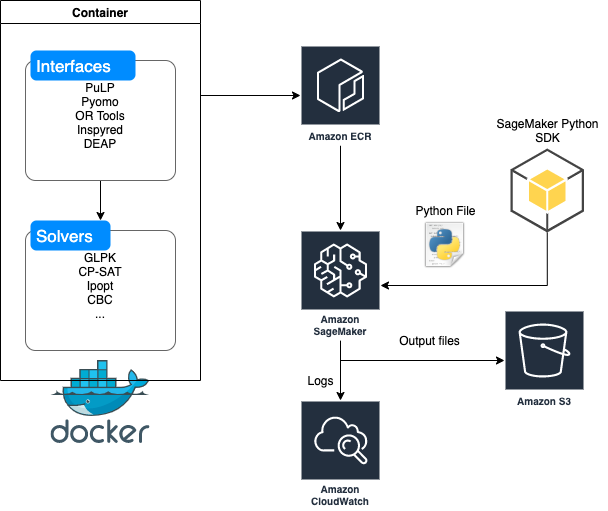
Let’s get started!
Building and pushing a Docker container
Start with the following Dockerfile:
FROM continuumio/anaconda3
RUN pip install boto3 pandas scikit-learn pulp pyomo inspyred ortools scipy deap
RUN conda install -c conda-forge ipopt coincbc glpk
ENV PYTHONUNBUFFERED=TRUE
ENTRYPOINT ["python"]
In this code, we install Python interfaces to solvers such as PuLP, Pyomo, Inspyred, OR-Tools, Scipy, and DEAP. For more information about these solvers, see the References section at the end of this post.
We then use the following commands from the notebook to build and push this container to Amazon ECR:
import boto3
account_id = boto3.client('sts').get_caller_identity().get('Account')
ecr_repository = 'sagemaker-opt-container'
tag = ':latest'
processing_repository_uri = '{}.dkr.ecr.{}.amazonaws.com/{}'.format(account_id, region, ecr_repository + tag)
# Create ECR repository and push docker image
!docker build -t $ecr_repository docker
!$(aws ecr get-login --region $region --registry-ids $account_id --no-include-email)
!aws ecr create-repository --repository-name $ecr_repository
!docker tag {ecr_repository + tag} $processing_repository_uri
!docker push $processing_repository_uriSample output for this command looks like the following code:
Sending build context to Docker daemon 2.048kB
Step 1/5 : FROM continuumio/anaconda3
---> 5fbf7bac70a0
Step 2/5 : RUN pip install boto3 pandas scikit-learn pulp pyomo inspyred ortools scipy deap
---> Using cache
---> 98864164a472
Step 3/5 : RUN conda install -c conda-forge ipopt coincbc glpk
---> Using cache
---> 1fde58988350
Step 4/5 : ENV PYTHONUNBUFFERED=TRUE
---> Using cache
---> 06cc27c84a9a
Step 5/5 : ENTRYPOINT ["python"]
---> Using cache
---> 0ae65a2ad5b9
Successfully built <code>
Successfully tagged sagemaker-opt-container:latest
WARNING! Using --password via the CLI is insecure. Use --password-stdin.
WARNING! Your password will be stored unencrypted in /home/ec2-user/.docker/config.json.
Configure a credential helper to remove this warning. See
https://docs.docker.com/engine/reference/commandline/login/#credentials-store
Login Succeeded
An error occurred (RepositoryAlreadyExistsException) when calling the CreateRepository operation: The repository with name 'sagemaker-opt-container' already exists in the registry with id '<account numnber>'
The push refers to repository [<account number>.dkr.ecr.<region>.amazonaws.com/sagemaker-opt-container]
8611989d: Preparing
d960633d: Preparing
db96c31c: Preparing
ea6160d7: Preparing
4bce66cd: Layer already exists latest: digest: sha256:<hash> size: 1379Using the SageMaker Python SDK to start a job
Typically, we first initialize a SageMaker Processing ScriptProcessor as follows:
from sagemaker.processing import ScriptProcessor
script_processor = ScriptProcessor(command=['python'],
image_uri=processing_repository_uri,
role=role,
instance_count=1,
instance_type='ml.m5.xlarge')Then we write a file (for this post, we always use a file called preprocessing.py) and run a processing job on SageMaker as follows:
from sagemaker.processing import ProcessingInput, ProcessingOutput
script_processor.run(code='preprocessing.py',
outputs=[ProcessingOutput(output_name='data',
source='/opt/ml/processing/data')])
script_processor_job_description = script_processor.jobs[-1].describe()
print(script_processor_job_description)
Use case 1: Minimizing the cost of shipping goods through a distribution network
In this use case, American Steel, an Ohio-based steel manufacturing company, produces steel at its two steel mills located at Youngstown and Pittsburgh. The company distributes finished steel to its retail customers through the distribution network of regional and field warehouses.
The network represents shipment of finished steel from American Steel—two steel mills located at Youngstown (node 1) and Pittsburgh (node 2) to their field warehouses at Albany, Houston, Tempe, and Gary (nodes 6, 7, 8, and 9) through three regional warehouses located at Cincinnati, Kansas City, and Chicago (nodes 3, 4, and 5). Also, some field warehouses can be directly supplied from the steel mills.
The following table presents the minimum and maximum flow amounts of steel that may be shipped between different cities, along with the cost per 1,000 tons per month of shipping the steel. For example, the shipment from Youngstown to Kansas City is contracted out to a railroad company with a minimal shipping clause of 1,000 tons per month. However, the railroad can’t ship more than 5,000 tons per month due the shortage of rail cars.
| From node | To node | Cost | Minimum | Maximum |
| Youngstown | Albany | 500 | – | 1000 |
| Youngstown | Cincinnati | 350 | – | 3000 |
| Youngstown | Kansas City | 450 | 1000 | 5000 |
| Youngstown | Chicago | 375 | – | 5000 |
| Pittsburgh | Cincinnati | 350 | – | 2000 |
| Pittsburgh | Kansas City | 450 | 2000 | 3000 |
| Pittsburgh | Chicago | 400 | – | 4000 |
| Pittsburgh | Gary | 450 | – | 2000 |
| Cincinnati | Albany | 350 | 1000 | 5000 |
| Cincinnati | Houston | 550 | – | 6000 |
| Kansas City | Houston | 375 | – | 4000 |
| Kansas City | Tempe | 650 | – | 4000 |
| Chicago | Tempe | 600 | – | 2000 |
| Chicago | Gary | 120 | – | 4000 |
The objective of transshipment problems in general and The American Steel Problem in particular is to minimize the cost of shipping goods through the network.
All the nodes have supply and demand, demand = 0 for supply nodes, supply = 0 for demand nodes, and supply = demand = 0 for transshipment nodes. The only constraints in the transshipment problem are flow conservation constraints. These constraints simply state that the flow of goods into a node must be greater than or equal to the flow of goods out of a node.
This problem can be formulated as follows:
%%writefile preprocessing.py
import argparse
import os
import warnings
"""
The American Steel Problem for the PuLP Modeller
Authors: Antony Phillips, Dr Stuart Mitchell 2007
"""
# Import PuLP modeller functions
from pulp import *
# List of all the nodes
Nodes = ["Youngstown",
"Pittsburgh",
"Cincinatti",
"Kansas City",
"Chicago",
"Albany",
"Houston",
"Tempe",
"Gary"]
nodeData = {# NODE Supply Demand
"Youngstown": [10000,0],
"Pittsburgh": [15000,0],
"Cincinatti": [0,0],
"Kansas City": [0,0],
"Chicago": [0,0],
"Albany": [0,3000],
"Houston": [0,7000],
"Tempe": [0,4000],
"Gary": [0,6000]}
# List of all the arcs
Arcs = [("Youngstown","Albany"),
("Youngstown","Cincinatti"),
("Youngstown","Kansas City"),
("Youngstown","Chicago"),
("Pittsburgh","Cincinatti"),
("Pittsburgh","Kansas City"),
("Pittsburgh","Chicago"),
("Pittsburgh","Gary"),
("Cincinatti","Albany"),
("Cincinatti","Houston"),
("Kansas City","Houston"),
("Kansas City","Tempe"),
("Chicago","Tempe"),
("Chicago","Gary")]
arcData = { # ARC Cost Min Max
("Youngstown","Albany"): [0.5,0,1000],
("Youngstown","Cincinatti"): [0.35,0,3000],
("Youngstown","Kansas City"): [0.45,1000,5000],
("Youngstown","Chicago"): [0.375,0,5000],
("Pittsburgh","Cincinatti"): [0.35,0,2000],
("Pittsburgh","Kansas City"): [0.45,2000,3000],
("Pittsburgh","Chicago"): [0.4,0,4000],
("Pittsburgh","Gary"): [0.45,0,2000],
("Cincinatti","Albany"): [0.35,1000,5000],
("Cincinatti","Houston"): [0.55,0,6000],
("Kansas City","Houston"): [0.375,0,4000],
("Kansas City","Tempe"): [0.65,0,4000],
("Chicago","Tempe"): [0.6,0,2000],
("Chicago","Gary"): [0.12,0,4000]}
# Splits the dictionaries to be more understandable
(supply, demand) = splitDict(nodeData)
(costs, mins, maxs) = splitDict(arcData)
# Creates the boundless Variables as Integers
vars = LpVariable.dicts("Route",Arcs,None,None,LpInteger)
# Creates the upper and lower bounds on the variables
for a in Arcs:
vars[a].bounds(mins[a], maxs[a])
# Creates the 'prob' variable to contain the problem data
prob = LpProblem("American Steel Problem",LpMinimize)
# Creates the objective function
prob += lpSum([vars[a]* costs[a] for a in Arcs]), "Total Cost of Transport"
# Creates all problem constraints - this ensures the amount going into each node is at least equal to the amount leaving
for n in Nodes:
prob += (supply[n]+ lpSum([vars[(i,j)] for (i,j) in Arcs if j == n]) >=
demand[n]+ lpSum([vars[(i,j)] for (i,j) in Arcs if i == n])), "Steel Flow Conservation in Node %s"%n
# The problem data is written to an .lp file
prob.writeLP('/opt/ml/processing/data/' + 'AmericanSteelProblem.lp')
# The problem is solved using PuLP's choice of Solver
prob.solve()
# The status of the solution is printed to the screen
print("Status:", LpStatus[prob.status])
# Each of the variables is printed with it's resolved optimum value
for v in prob.variables():
print(v.name, "=", v.varValue)
# The optimised objective function value is printed to the screen
print("Total Cost of Transportation = ", value(prob.objective))We solve this problem using the PuLP interface and its default solver GLPK using script_processor.run. Logs from this optimization job provide these solutions:
Status: Optimal
Route_('Chicago',_'Gary') = 4000.0
Route_('Chicago',_'Tempe') = 2000.0
Route_('Cincinatti',_'Albany') = 2000.0
Route_('Cincinatti',_'Houston') = 3000.0
Route_('Kansas_City',_'Houston') = 4000.0
Route_('Kansas_City',_'Tempe') = 2000.0
Route_('Pittsburgh',_'Chicago') = 3000.0
Route_('Pittsburgh',_'Cincinatti') = 2000.0
Route_('Pittsburgh',_'Gary') = 2000.0
Route_('Pittsburgh',_'Kansas_City') = 3000.0
Route_('Youngstown',_'Albany') = 1000.0
Route_('Youngstown',_'Chicago') = 3000.0
Route_('Youngstown',_'Cincinatti') = 3000.0
Route_('Youngstown',_'Kansas_City') = 3000.0
Total Cost of Transportation = 15005.0Use case 2: Scheduling shifts of a set of nurses in a hospital
In the next example, a hospital supervisor must create a schedule for four nurses over a 3-day period, subject to the following conditions:
- Each day is divided into three 8-hour shifts
- Every day, each shift is assigned to a single nurse, and no nurse works more than one shift
- Each nurse is assigned to at least two shifts during the 3-day period
For more information about this scheduling use case, see Employee Scheduling.
This problem can be formulated as follows:
%%writefile preprocessing.py
from __future__ import print_function
from ortools.sat.python import cp_model
class NursesPartialSolutionPrinter(cp_model.CpSolverSolutionCallback):
"""Print intermediate solutions."""
def __init__(self, shifts, num_nurses, num_days, num_shifts, sols):
cp_model.CpSolverSolutionCallback.__init__(self)
self._shifts = shifts
self._num_nurses = num_nurses
self._num_days = num_days
self._num_shifts = num_shifts
self._solutions = set(sols)
self._solution_count = 0
def on_solution_callback(self):
if self._solution_count in self._solutions:
print('Solution %i' % self._solution_count)
for d in range(self._num_days):
print('Day %i' % d)
for n in range(self._num_nurses):
is_working = False
for s in range(self._num_shifts):
if self.Value(self._shifts[(n, d, s)]):
is_working = True
print(' Nurse %i works shift %i' % (n, s))
if not is_working:
print(' Nurse {} does not work'.format(n))
print()
self._solution_count += 1
def solution_count(self):
return self._solution_count
def main():
# Data.
num_nurses = 4
num_shifts = 3
num_days = 3
all_nurses = range(num_nurses)
all_shifts = range(num_shifts)
all_days = range(num_days)
# Creates the model.
model = cp_model.CpModel()
# Creates shift variables.
# shifts[(n, d, s)]: nurse 'n' works shift 's' on day 'd'.
shifts = {}
for n in all_nurses:
for d in all_days:
for s in all_shifts:
shifts[(n, d,
s)] = model.NewBoolVar('shift_n%id%is%i' % (n, d, s))
# Each shift is assigned to exactly one nurse in the schedule period.
for d in all_days:
for s in all_shifts:
model.Add(sum(shifts[(n, d, s)] for n in all_nurses) == 1)
# Each nurse works at most one shift per day.
for n in all_nurses:
for d in all_days:
model.Add(sum(shifts[(n, d, s)] for s in all_shifts) <= 1)
# min_shifts_per_nurse is the largest integer such that every nurse
# can be assigned at least that many shifts. If the number of nurses doesn't
# divide the total number of shifts over the schedule period,
# some nurses have to work one more shift, for a total of
# min_shifts_per_nurse + 1.
min_shifts_per_nurse = (num_shifts * num_days) // num_nurses
max_shifts_per_nurse = min_shifts_per_nurse + 1
for n in all_nurses:
num_shifts_worked = sum(
shifts[(n, d, s)] for d in all_days for s in all_shifts)
model.Add(min_shifts_per_nurse <= num_shifts_worked)
model.Add(num_shifts_worked <= max_shifts_per_nurse)
# Creates the solver and solve.
solver = cp_model.CpSolver()
solver.parameters.linearization_level = 0
# Display the first five solutions.
a_few_solutions = range(5)
solution_printer = NursesPartialSolutionPrinter(shifts, num_nurses,
num_days, num_shifts,
a_few_solutions)
solver.SearchForAllSolutions(model, solution_printer)
# Statistics.
print()
print('Statistics')
print(' - conflicts : %i' % solver.NumConflicts())
print(' - branches : %i' % solver.NumBranches())
print(' - wall time : %f s' % solver.WallTime())
print(' - solutions found : %i' % solution_printer.solution_count())
if __name__ == '__main__':
main()We solve this problem using the OR-Tools interface and its CP-SAT solver with script_processor.run. Logs from this optimization job provide these solutions:
Solution 0
Day 0
Nurse 0 does not work
Nurse 1 works shift 0
Nurse 2 works shift 1
Nurse 3 works shift 2
Day 1
Nurse 0 works shift 2
Nurse 1 does not work
Nurse 2 works shift 1
Nurse 3 works shift 0
Day 2
Nurse 0 works shift 2
Nurse 1 works shift 1
Nurse 2 works shift 0
Nurse 3 does not work
Solution 1
Day 0
Nurse 0 works shift 0
Nurse 1 does not work
Nurse 2 works shift 1
Nurse 3 works shift 2
Day 1
Nurse 0 does not work
Nurse 1 works shift 2
Nurse 2 works shift 1
Nurse 3 works shift 0
Day 2
Nurse 0 works shift 2
Nurse 1 works shift 1
Nurse 2 works shift 0
Nurse 3 does not work
Solution 2
Day 0
Nurse 0 works shift 0
Nurse 1 does not work
Nurse 2 works shift 1
Nurse 3 works shift 2
Day 1
Nurse 0 works shift 1
Nurse 1 works shift 2
Nurse 2 does not work
Nurse 3 works shift 0
Day 2
Nurse 0 works shift 2
Nurse 1 works shift 1
Nurse 2 works shift 0
Nurse 3 does not work
Solution 3
Day 0
Nurse 0 works shift 0
Nurse 1 does not work
Nurse 2 works shift 1
Nurse 3 works shift 2
Day 1
Nurse 0 works shift 2
Nurse 1 works shift 1
Nurse 2 does not work
Nurse 3 works shift 0
Day 2
Nurse 0 works shift 2
Nurse 1 works shift 1
Nurse 2 works shift 0
Nurse 3 does not work
Solution 4
Day 0
Nurse 0 does not work
Nurse 1 works shift 0
Nurse 2 works shift 1
Nurse 3 works shift 2
Day 1
Nurse 0 works shift 2
Nurse 1 works shift 1
Nurse 2 does not work
Nurse 3 works shift 0
Day 2
Nurse 0 works shift 2
Nurse 1 works shift 1
Nurse 2 works shift 0
Nurse 3 does not work
Statistics
- conflicts : 37
- branches : 41231
- wall time : 0.367511 s
- solutions found : 5184Use case 3: Finding a trajectory for landing the Apollo 11 Lunar Module with the least amount of fuel
This example uses Pyomo and a simple model of a rocket to compute a control policy for a soft landing. The parameters used correspond to the descent of the Apollo 11 Lunar Module to the moon on July 20, 1969. For a rocket with a mass 𝑚 in vertical flight at altitude ℎ, a momentum balance yields the following model:

In this model, 𝑢 is the mass flow of propellant and 𝑣𝑒 is the velocity of the exhaust relative to the rocket. In this first attempt at modeling and control, we neglect the change in rocket mass due to fuel burn.
Fuel consumption can be calculated as the following:

We want to find a trajectory that minimizes fuel consumption:

This problem can be formulated as follows:
%%writefile preprocessing.py
import numpy as np
from pyomo.environ import *
from pyomo.dae import *
#Define constants ...
# lunar module
m_ascent_dry = 2445.0 # kg mass of ascent stage without fuel
m_ascent_fuel = 2376.0 # kg mass of ascent stage fuel
m_descent_dry = 2034.0 # kg mass of descent stage without fuel
m_descent_fuel = 8248.0 # kg mass of descent stage fuel
m_fuel = m_descent_fuel
m_dry = m_ascent_dry + m_ascent_fuel + m_descent_dry
m_total = m_dry + m_fuel
# descent engine characteristics
v_exhaust = 3050.0 # m/s
u_max = 45050.0/v_exhaust # 45050 newtons / exhaust velocity
# landing mission specifications
h_initial = 100000.0 # meters
v_initial = 1520 # orbital velocity m/s
g = 1.62 # m/s**2
m = ConcreteModel()
m.t = ContinuousSet(bounds=(0, 1))
m.h = Var(m.t)
m.u = Var(m.t, bounds=(0, u_max))
m.T = Var(domain=NonNegativeReals)
m.v = DerivativeVar(m.h, wrt=m.t)
m.a = DerivativeVar(m.v, wrt=m.t)
m.fuel = Integral(m.t, wrt=m.t, rule = lambda m, t: m.u[t]*m.T)
m.obj = Objective(expr=m.fuel, sense=minimize)
m.ode1 = Constraint(m.t, rule = lambda m, t: m_total*m.a[t]/m.T**2 == -m_total*g + v_exhaust*m.u[t])
m.h[0].fix(h_initial)
m.v[0].fix(-v_initial)
m.h[1].fix(0) # land on surface
m.v[1].fix(0) # soft landing
def solve(m):
TransformationFactory('dae.finite_difference').apply_to(m, nfe=50, scheme='FORWARD')
SolverFactory('ipopt').solve(m, tee=True)
solve(m)We use the Pyomo interface and the nonlinear optimization solver Ipopt to solve this continuous-time, trajectory optimization problem. Logs from ScriptProcessor.run provide the following solution:
Ipopt 3.12.13:
******************************************************************************
This program contains Ipopt, a library for large-scale nonlinear optimization.
Ipopt is released as open source code under the Eclipse Public License (EPL).
For more information visit http://projects.coin-or.org/Ipopt
******************************************************************************
This is Ipopt version 3.12.13, running with linear solver mumps.
NOTE: Other linear solvers might be more efficient (see Ipopt documentation).
Number of nonzeros in equality constraint Jacobian...: 448
Number of nonzeros in inequality constraint Jacobian.: 0
Number of nonzeros in Lagrangian Hessian.............: 154
Error in an AMPL evaluation. Run with "halt_on_ampl_error yes" to see details.
Error evaluating Jacobian of equality constraints at user provided starting point.
No scaling factors for equality constraints computed!
Total number of variables............................: 201
variables with only lower bounds: 1
variables with lower and upper bounds: 51
variables with only upper bounds: 0
Total number of equality constraints.................: 151
Total number of inequality constraints...............: 0
inequality constraints with only lower bounds: 0
inequality constraints with lower and upper bounds: 0
inequality constraints with only upper bounds: 0
iter objective inf_pr inf_du lg(mu) ||d|| lg(rg) alpha_du alpha_pr ls
0 9.9999800e-05 5.00e+06 9.90e-01 -1.0 0.00e+00 - 0.00e+00 0.00e+00 0
1r 9.9999800e-05 5.00e+06 9.99e+02 6.7 0.00e+00 - 0.00e+00 4.29e-14R 4
2r 2.1397987e+02 5.00e+06 4.78e+08 6.7 2.14e+05 - 1.00e+00 6.83e-05f 1
3r 2.1342176e+02 5.00e+06 1.36e+08 3.2 4.37e+04 - 7.16e-01 6.16e-01f 1
4r 1.7048263e+02 4.99e+06 4.67e+07 3.2 1.60e+04 - 9.85e-01 4.16e-01f 1
5r 1.5143799e+02 4.99e+06 2.50e+07 3.2 3.57e+03 - 5.88e-01 7.62e-01f 1
6r 1.3041897e+02 4.99e+06 2.08e+07 3.2 1.89e+03 - 2.75e-01 8.14e-01f 1
7r 1.1452223e+02 4.99e+06 3.17e+04 3.2 1.97e+03 - 9.78e-01 8.18e-01f 1
8r 1.1168709e+02 4.99e+06 2.72e+05 3.2 3.36e-01 4.0 9.78e-01 1.00e+00f 1
9r 1.0774716e+02 4.99e+06 1.66e+05 3.2 4.28e+03 - 9.36e-01 9.70e-02f 1
iter objective inf_pr inf_du lg(mu) ||d|| lg(rg) alpha_du alpha_pr ls
10r 8.7784873e+01 5.00e+06 5.08e+04 3.2 3.69e+03 - 8.74e-01 7.24e-01f 1
11r 7.9008215e+01 5.00e+06 1.88e+04 2.5 1.09e+03 - 1.22e-01 8.35e-01h 1
12r 1.1960245e+02 5.00e+06 4.34e+03 2.5 1.81e+03 - 6.76e-01 1.00e+00f 1
13r 1.2344166e+02 5.00e+06 1.35e+03 1.8 1.66e+02 - 8.23e-01 1.00e+00f 1
14r 2.0065756e+02 4.99e+06 6.85e+02 1.1 4.28e+03 - 4.26e-01 1.00e+00f 1
15r 3.0115879e+02 4.99e+06 4.78e+01 1.1 9.69e+03 - 7.64e-01 1.00e+00f 1
16r 3.0355974e+02 4.99e+06 5.30e+00 1.1 4.92e+00 - 1.00e+00 1.00e+00f 1
17r 3.0555655e+02 4.99e+06 6.83e+02 0.4 7.49e+00 - 1.00e+00 1.00e+00f 1
18r 4.4494526e+02 4.97e+06 2.28e+01 0.4 2.17e+04 - 8.05e-01 1.00e+00f 1
19r 3.9588385e+02 4.97e+06 3.77e+00 0.4 4.73e+00 - 1.00e+00 1.00e+00f 1
iter objective inf_pr inf_du lg(mu) ||d|| lg(rg) alpha_du alpha_pr ls
20r 4.0158949e+02 4.97e+06 7.79e-02 0.4 5.70e-01 - 1.00e+00 1.00e+00h 1
21r 4.0076180e+02 4.97e+06 9.88e+02 -1.0 1.80e+00 - 1.00e+00 1.00e+00f 1
22r 5.4964501e+02 4.95e+06 7.59e+02 -1.0 1.57e+05 - 2.48e-01 2.32e-01f 1
23r 5.5056601e+02 4.95e+06 7.57e+02 -1.0 1.21e+05 - 1.00e+00 3.02e-03f 1
24r 5.5057553e+02 4.95e+06 7.57e+02 -1.0 1.09e+05 - 8.13e-01 3.34e-05f 1
25r 5.5898777e+02 4.95e+06 7.00e+02 -1.0 3.82e+04 - 1.00e+00 7.48e-02f 1
26r 6.0274077e+02 4.96e+06 3.93e+02 -1.0 3.53e+04 - 1.00e+00 4.39e-01f 1
27r 6.0301192e+02 4.96e+06 3.90e+02 -1.0 1.98e+04 - 1.00e+00 7.83e-03f 1
28r 6.0301418e+02 4.96e+06 3.89e+02 -1.0 1.61e+04 - 1.00e+00 9.62e-05f 1
29r 5.9834909e+02 4.96e+06 3.71e+02 -1.0 3.63e+03 - 1.00e+00 1.85e-01f 1
iter objective inf_pr inf_du lg(mu) ||d|| lg(rg) alpha_du alpha_pr ls
30r 5.7601446e+02 4.95e+06 1.67e+00 -1.0 2.96e+03 - 1.00e+00 1.00e+00f 1
31r 5.6977301e+02 4.95e+06 6.41e-02 -1.0 1.22e+00 - 1.00e+00 1.00e+00h 1
32r 5.7024128e+02 4.95e+06 9.05e-05 -1.0 4.89e-02 - 1.00e+00 1.00e+00h 1
33r 5.6989454e+02 4.95e+06 6.84e+02 -2.5 9.30e-02 - 1.00e+00 1.00e+00f 1
34r 5.7613459e+02 4.94e+06 5.38e+02 -2.5 5.65e+04 - 4.67e-01 2.13e-01f 1
35r 5.7617358e+02 4.94e+06 5.37e+02 -2.5 4.45e+04 - 1.00e+00 9.52e-04f 1
36r 6.6264177e+02 4.90e+06 3.78e+01 -2.5 4.45e+04 - 6.62e-01 9.30e-01f 1
37r 7.5101828e+02 4.90e+06 7.59e+01 -2.5 3.12e+03 - 1.25e-02 1.00e+00f 1
38r 7.5705424e+02 4.90e+06 8.60e-02 -2.5 7.04e-01 - 1.00e+00 1.00e+00h 1
39r 7.5713736e+02 4.90e+06 2.85e-05 -2.5 9.02e-03 - 1.00e+00 1.00e+00h 1
iter objective inf_pr inf_du lg(mu) ||d|| lg(rg) alpha_du alpha_pr ls
40r 7.5713093e+02 4.90e+06 4.90e+02 -5.7 6.76e-03 - 1.00e+00 9.99e-01f 1
41r 1.0909809e+03 4.78e+06 4.67e+02 -5.7 2.54e+06 - 6.15e-02 4.62e-02f 1
42r 1.0909867e+03 4.78e+06 4.67e+02 -5.7 2.42e+06 - 1.00e+00 9.55e-07f 1
43r 1.5672936e+03 4.59e+06 8.15e+03 -5.7 2.42e+06 - 3.36e-03 7.69e-02f 1
44r 1.7598365e+03 4.50e+06 8.17e+03 -5.7 2.24e+06 - 4.43e-08 4.23e-02f 1
45r 5.7264420e+03 2.36e+06 4.60e+03 -5.7 2.14e+06 - 7.07e-02 1.00e+00f 1
46 4.3546591e+03 2.35e+06 1.50e+01 -1.0 2.51e+08 - 3.52e-03 2.97e-03f 1
47 3.7700543e+03 2.16e+06 1.94e+01 -1.0 2.87e+06 - 3.27e-01 8.10e-02f 1
48 3.9963720e+03 1.02e+06 7.97e+00 -1.0 3.70e+05 - 3.47e-01 5.26e-01h 1
49 4.0601733e+03 5.28e+05 5.09e+00 -1.0 1.57e+06 - 5.24e-03 4.85e-01h 1
iter objective inf_pr inf_du lg(mu) ||d|| lg(rg) alpha_du alpha_pr ls
50 4.0596593e+03 5.27e+05 3.53e+00 -1.0 4.32e+06 - 7.60e-01 1.81e-03h 1
51 4.1577305e+03 9.40e+04 7.32e-01 -1.0 4.01e+05 - 9.09e-01 8.22e-01h 1
52 4.1754490e+03 1.27e+01 4.74e-02 -1.0 5.08e+04 - 8.32e-01 1.00e+00h 1
53 4.1752565e+03 7.78e-02 8.68e-07 -1.0 1.49e+04 - 1.00e+00 1.00e+00h 1
54 4.1704409e+03 1.60e+00 3.18e-05 -2.5 1.16e+04 - 1.00e+00 1.00e+00f 1
55 4.1704236e+03 6.98e-04 2.83e-08 -2.5 1.41e+03 - 1.00e+00 1.00e+00h 1
56 4.1702897e+03 1.15e-03 2.31e-08 -3.8 2.98e+02 - 1.00e+00 1.00e+00f 1
57 4.1702823e+03 3.63e-06 5.75e-11 -5.7 1.67e+01 - 1.00e+00 1.00e+00h 1
58 4.1702822e+03 1.28e-09 1.62e-14 -8.6 2.04e-01 - 1.00e+00 1.00e+00h 1
Number of Iterations....: 58
(scaled) (unscaled)
Objective...............: 4.1702822027548118e+03 4.1702822027548118e+03
Dual infeasibility......: 1.6235231869939369e-14 1.6235231869939369e-14
Constraint violation....: 1.2805685400962830e-09 1.2805685400962830e-09
Complementarity.........: 2.5079038009909822e-09 2.5079038009909822e-09
Overall NLP error.......: 2.5079038009909822e-09 2.5079038009909822e-09
Number of objective function evaluations = 63
Number of objective gradient evaluations = 16
Number of equality constraint evaluations = 63
Number of inequality constraint evaluations = 0
Number of equality constraint Jacobian evaluations = 60
Number of inequality constraint Jacobian evaluations = 0
Number of Lagrangian Hessian evaluations = 58
Total CPU secs in IPOPT (w/o function evaluations) = 0.682
Total CPU secs in NLP function evaluations = 0.002
EXIT: Optimal Solution Found.Summary
We used various examples, front ends, and solvers to solve numerical optimization problems using SageMaker Processing. Next, try using Scipy.optimize, DEAP, or Inspyred to explore other examples. See the references in the next section for documentation and other examples to help solve your own business problems using SageMaker Processing. If you currently use SageMaker APIs for your machine learning projects, using SageMaker Processing for running optimization is a simple, obvious extension. However, consider that other compute options on AWS such as Lambda or Fargate may be more relevant when running some of these open source libraries for serverless optimization, especially when your team has this expertise. Lastly, open source libraries are provided as is, with minimal support whereas commercial libraries such as CPLEX and Gurobi are constantly being tuned for higher performance, and usually provide premium support.
References
- Training APIs: Processing
- https://pypi.org/project/PuLP/
- OR-Tools: Get Started Guides
- Pyomo Documentation 5.7.2
- inspyred: Recipes
- Optimization and root finding (scipy.optimize)
- DEAP documentation
- https://www.gurobi.com/
- CPLEX optimzer
- OR Tools code license
- PuLP code license
- Pyomo code license
About the Author
 Shreyas Subramanian is a AI/ML specialist Solutions Architect, and helps customers by using Machine Learning to solve their business challenges using the AWS platform.
Shreyas Subramanian is a AI/ML specialist Solutions Architect, and helps customers by using Machine Learning to solve their business challenges using the AWS platform.
















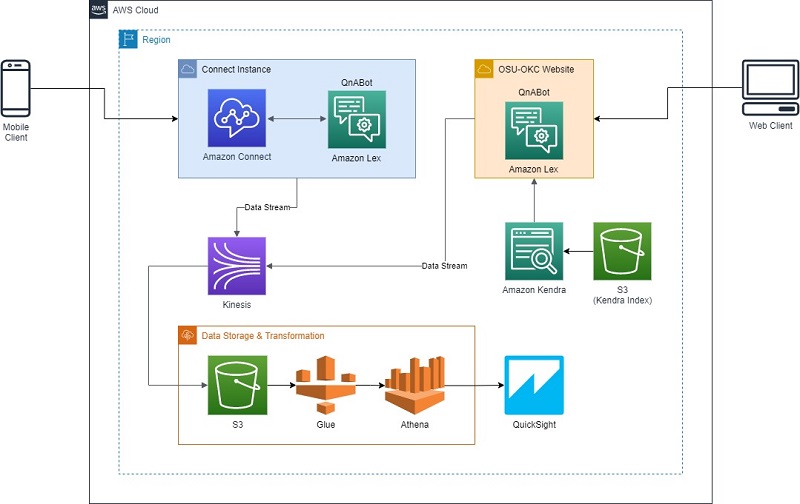

 Bob Strahan is a Principal Solutions Architect in the AWS Language AI Services team.
Bob Strahan is a Principal Solutions Architect in the AWS Language AI Services team. Michael Widell is the Interim President at OSU-OKC. As an innovative agent of change he has worked to strengthen organizations through redesign and resource optimization, allowing individuals to excel, and deliver transformative products and services. In his career, Widell has also held leadership positions in the private sector for AT&T and key roles within the General Office of Walmart Inc. where he began his post collegiate career.
Michael Widell is the Interim President at OSU-OKC. As an innovative agent of change he has worked to strengthen organizations through redesign and resource optimization, allowing individuals to excel, and deliver transformative products and services. In his career, Widell has also held leadership positions in the private sector for AT&T and key roles within the General Office of Walmart Inc. where he began his post collegiate career.



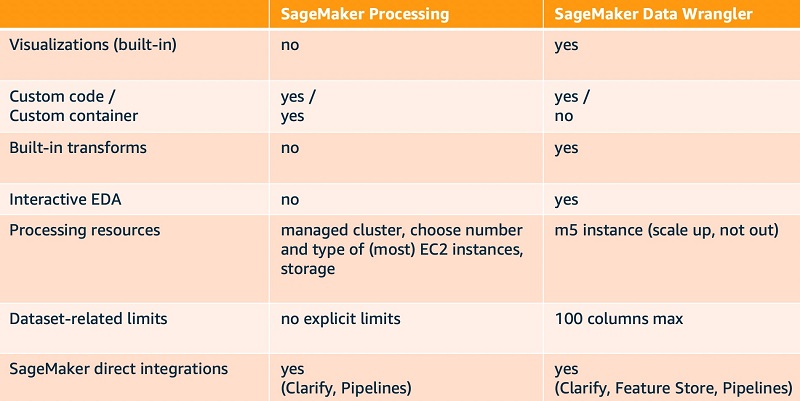
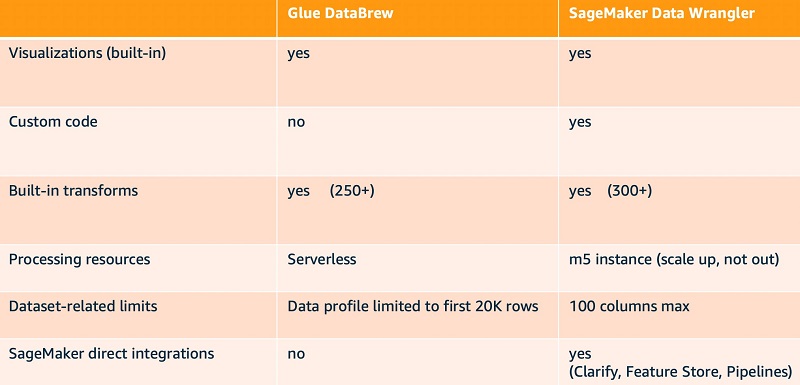
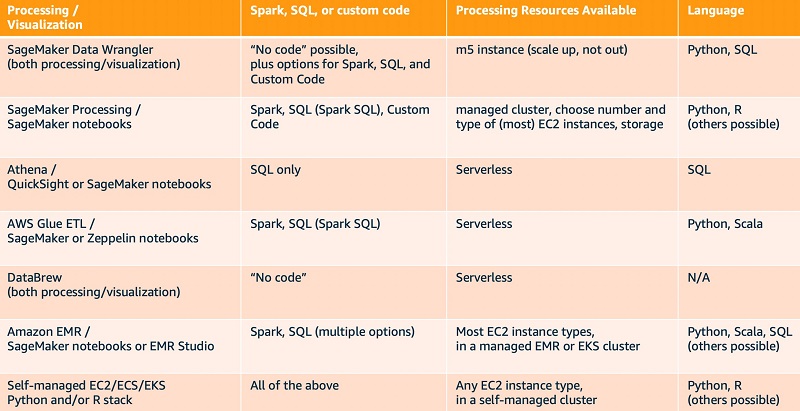
 Brent Rabowsky focuses on data science at AWS, and leverages his expertise to help AWS customers with their own data science projects.
Brent Rabowsky focuses on data science at AWS, and leverages his expertise to help AWS customers with their own data science projects.





 Siva Rajamani is a Boston-based Enterprise Solutions Architect for AWS. He enjoys working closely with customers and supporting their digital transformation and AWS adoption journey. His core areas of focus are serverless, application integration, and security. Outside of work, he enjoys outdoors activities and watching documentaries.
Siva Rajamani is a Boston-based Enterprise Solutions Architect for AWS. He enjoys working closely with customers and supporting their digital transformation and AWS adoption journey. His core areas of focus are serverless, application integration, and security. Outside of work, he enjoys outdoors activities and watching documentaries. Raju Penmatcha is a Senior AI/ML Specialist Solutions Architect at AWS. He works with education, government, and non-profit customers on machine learning and artificial intelligence related projects, helping them build solutions using AWS. When not helping customers, he likes traveling to new places with his family.
Raju Penmatcha is a Senior AI/ML Specialist Solutions Architect at AWS. He works with education, government, and non-profit customers on machine learning and artificial intelligence related projects, helping them build solutions using AWS. When not helping customers, he likes traveling to new places with his family.
